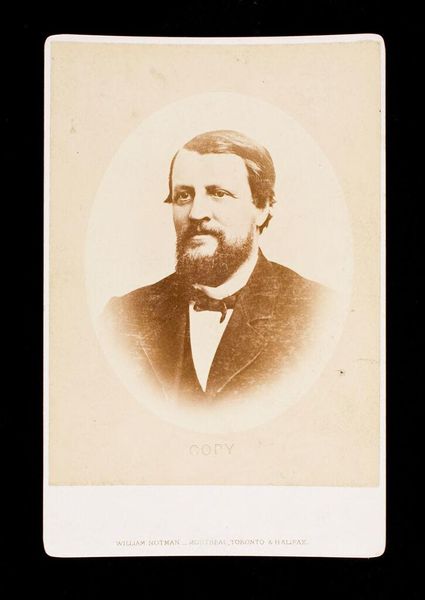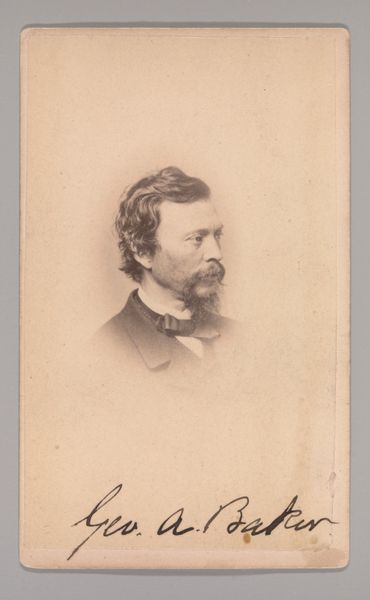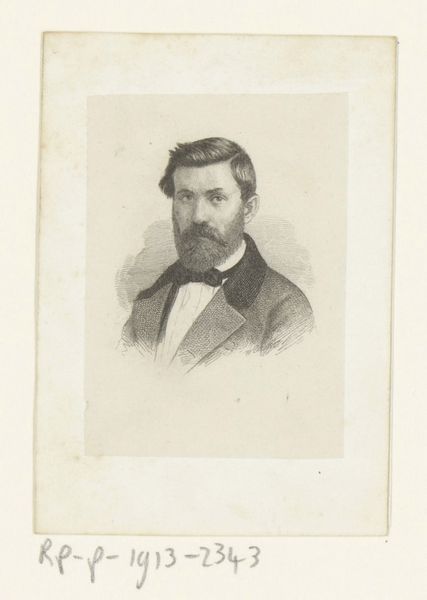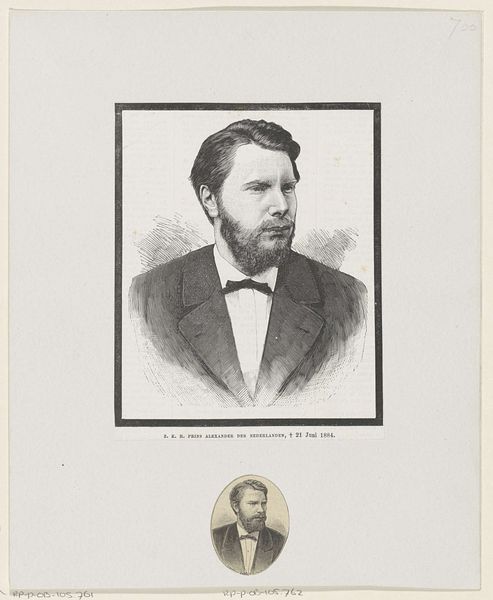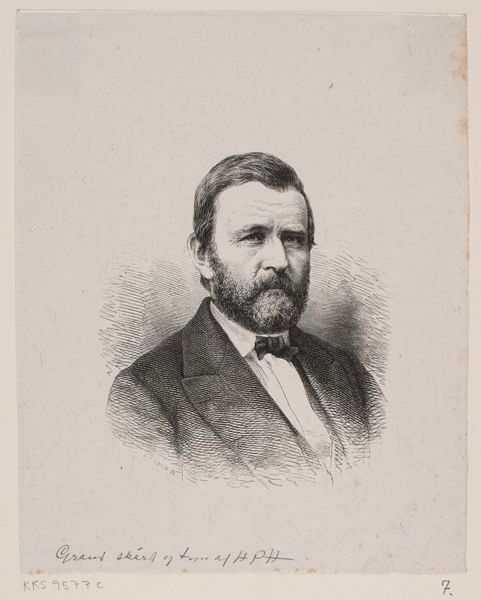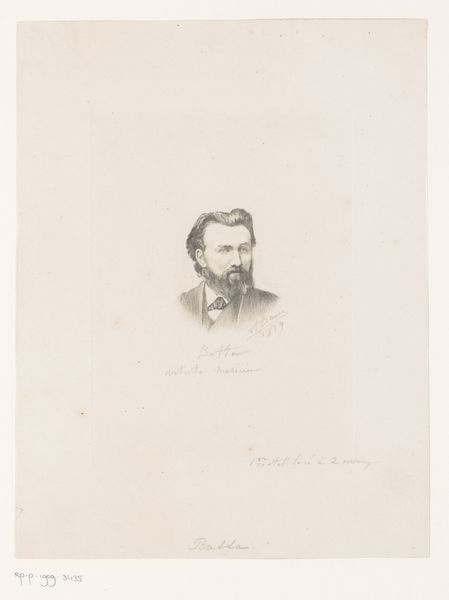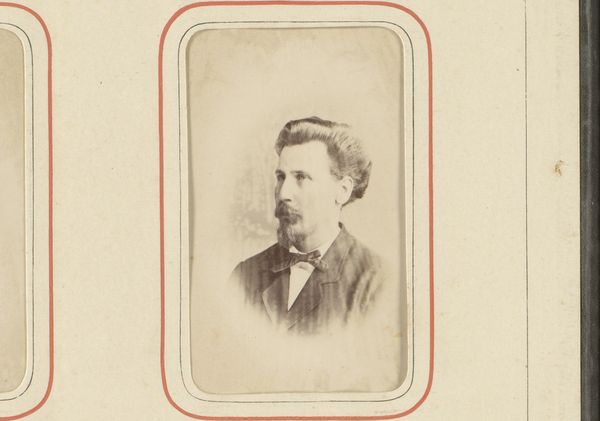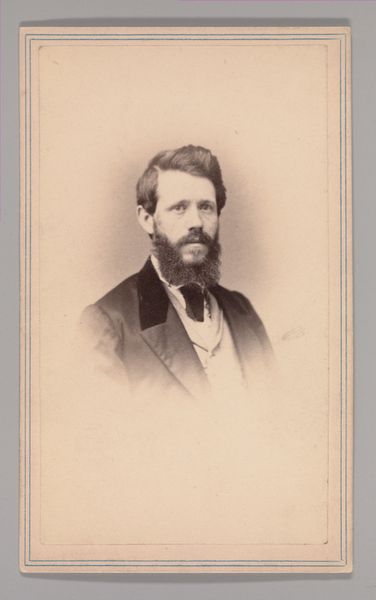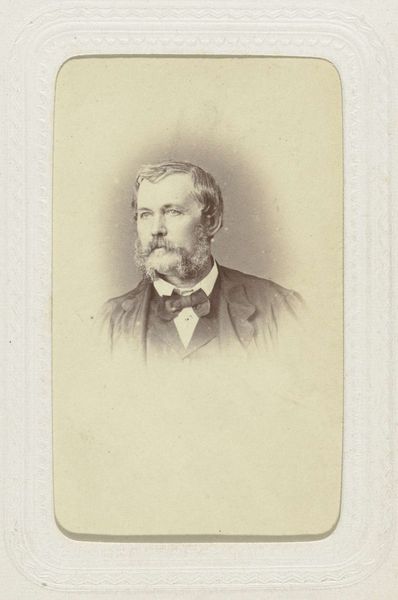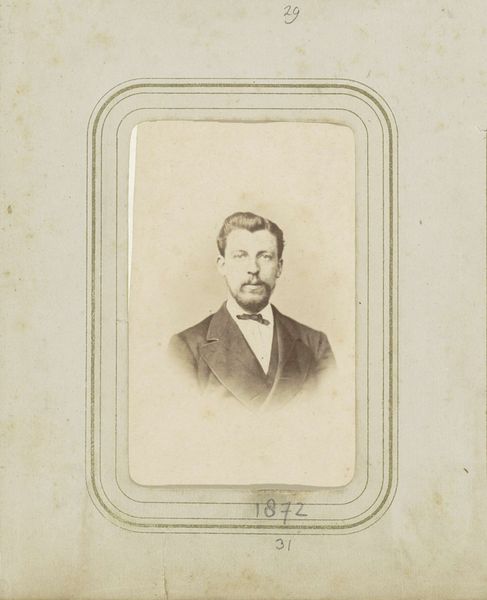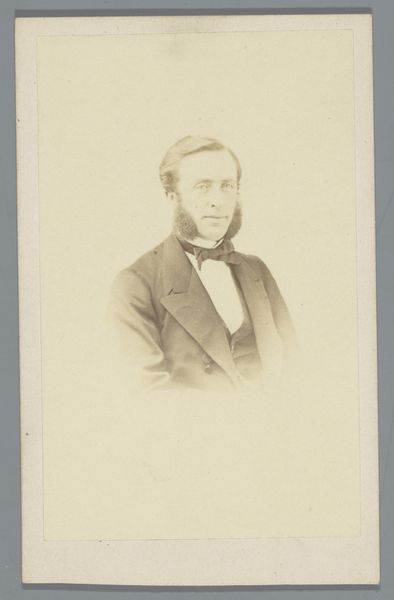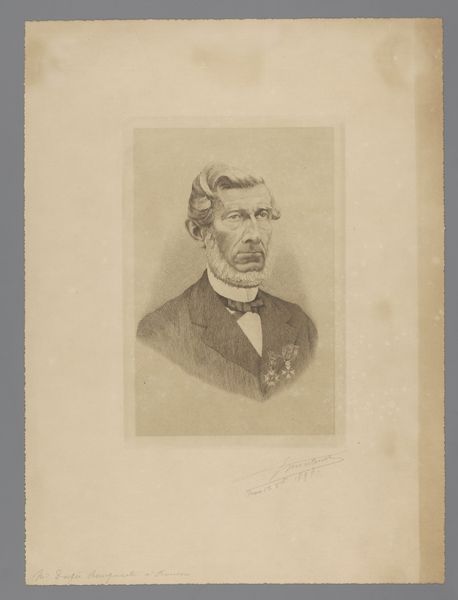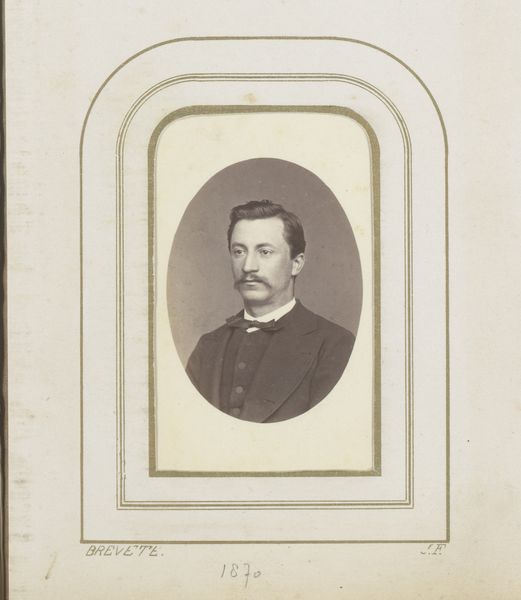
print, engraving
#
portrait
#
16_19th-century
# print
#
old engraving style
#
archive photography
#
historical photography
#
portrait reference
#
history-painting
#
academic-art
#
engraving
#
realism
Dimensions: height 150 mm, width 99 mm
Copyright: Rijks Museum: Open Domain
Curator: Looking at this print, my first impression is one of reserve. A kind of buttoned-up formality that’s almost sepia-toned in spirit, even if it’s just black and white. Editor: Indeed. This is a portrait of Willem, Prince of the Netherlands. Although made anonymously, it dates from between 1865 and 1949. It’s an engraving, a kind of printmaking that favours crisp lines. Curator: Those crisp lines definitely contribute to the feeling. The figure seems to be looking out at the viewer with a sense of quiet authority, carefully managing the image they project. It feels archetypal. Editor: Note how the engraver uses hatching to define form, to render shadow and light. See how close parallel lines build the textures of his jacket and beard? The details work to convey volume in the face and a particular weightiness in his presence. Curator: It makes me consider how power was visualized in the late 19th and early 20th centuries. There’s a conscious creation of a stoic persona, a projection of steadfast leadership that I feel in a lot of imagery from this period. Almost an iconographic intent to build an impression of stability and order in an age of enormous upheaval. Editor: Precisely. There’s a very conscious attention to detail in portraying the prince's attire. The bow tie, the waistcoat—these details place him firmly within the traditions of the era’s high society, suggesting continuity with the past and hinting at timelessness in governance. Curator: Even the medium, an engraving, lends a certain gravitas. It consciously links back to older methods of image making which might themselves project permanence in contrast to, say, a photograph, which was a much newer invention at the time this was made. The artist’s choice itself says something about how they want you to receive their subject. Editor: You're right to consider the echoes of the past embedded in the artwork. Curator: It’s a fascinating interplay between form and historical context, wouldn’t you agree? Editor: It really brings out how an image and symbol can come together, almost like alchemy, to communicate meaning far beyond what is actually pictured.
Comments
No comments
Be the first to comment and join the conversation on the ultimate creative platform.
